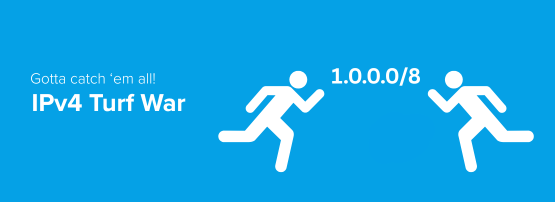
If you haven’t yet heard about it, open the browser on every device you own, visit ipv4.games, and claim your patch of turf.
It is a remarkably simple and direct game. Your public IPv4 address is marked with your tag. If your address is behind Carrier-Grade Network Address Translation (CGNAT) or a dynamic address that is reassigned on a short-term lease, somebody else may claim the same IP when it changes.
A hill of IPv4 to climb
If you can lay claim to more IP space than anyone else in a given block, you ‘win’ for that /8. This means that if nobody else is ‘playing’ in a block of space, you can become a board leader quite quickly, but if somebody else is active in the same /8 and, for example, runs a small farm of machines, you have a hill of IPv4 to climb to regain control.
It is simple, charming, and almost entirely innocent. The game appears to have little in the way of markup and runs on a straightforward back end. Because it is based on basic web methods, some discussion has emerged about using the HTTP proxy header to appear to originate from many different IP addresses via an intermediary. Is that ‘cheating’ or simply being clever?
Potential measurement tool?
Despite its simplicity, gamifying address distribution and usage could serve as a measurement tool, provided distortions can be controlled. The method for claiming ownership, for example, would need to be understood and accounted for. There is also a self-selection bias; the people motivated to play are unlikely to be representative of all IP address users, and players are unlikely to be evenly distributed.
Aside from client-specific measurements like the round-trip time and protocol selection, my guess is that players would be from a younger cohort. Perhaps the gamification here measures the social aspects of networks more than the addressing itself.
Pleasure in simple things
This game demonstrates that there is pleasure in simple things. There are no bells and whistles, no special badges or animations, there’s just a ranking table and an objective measure — appear from as many different addresses as possible and get your name on the board. That said, it would be nice if there were a way to do a little more. For example, it could show how much IPv6 is in use, allowing players to claim a /32 or /48, or reward extra points for connecting on both IPv4 and IPv6.
Have a go and see how much turf you can lay claim to. I tried for a /24 I have access to and failed; the current board leader must work for an ISP with a big footprint!
The views expressed by the authors of this blog are their own and do not necessarily reflect the views of APNIC. Please note a Code of Conduct applies to this blog.
